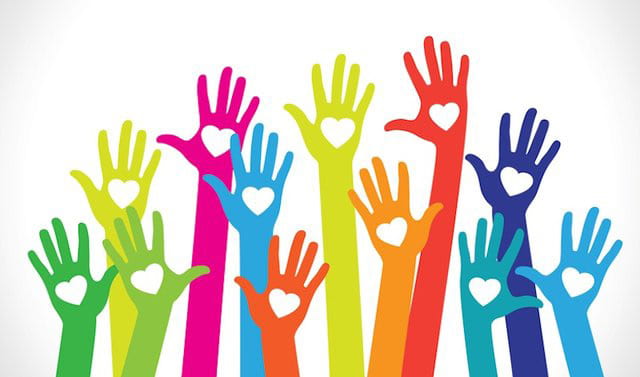
How to keep donors after the Generous Tuesday campaign ends
Since its inception in 2012, the Generous Tuesday campaigns have raised more each year - the total in 2018 is about $400 million. The opportunity for nonprofits to benefit from Giving Tuesday is great, but what happens after Giving Tuesday? With a donor retention rate of about 45%, how can nonprofits use the springboard of this popular event to retain donors long-term?
Focus on donor retention
Every nonprofit knows the battle to retain donors, but many don't understand the big picture or strategies to achieve long-term success. The short answer is that nonprofits are not making the necessary and proper efforts to see an increase in their donor retention. Broadly speaking, nonprofits are:
- Focused too much on donor acquisition and not enough on donor retention.
- Not communicating in a personalized enough way with their donors to inspire them to make additional gifts.
- Losing future donations by not using segmented email marketing campaigns.
New donors from campaigns like Giving Tuesday
Since Giving Tuesday is one of the biggest charity days of the year, it's also one of the biggest opportunities to start new and lucrative relationships with people donating to an organization's cause. GivingTuesday.com states that donors who participate are 10-15% more likely to give again.
Many nonprofits spend the lion's share of their fundraising efforts on recruiting new donors, which is an expensive process. In the case of Giving Tuesday, capitalizing on the movement's momentum with a personalized fundraising campaign can mean less effort to attract new donors and more return on investment. While donations are the primary goal, there is also a huge opportunity to attract one-time donors from Giving Tuesday's annual campaigns and create long-term relationships.
When creating Giving Tuesday campaigns, nonprofits should focus on presentation and word-of-mouth that will set the foundation for that long-term relationship. Not only does the nonprofit need to present a campaign that entices a potential donor, but it also needs to resonate. They need to feel a kinship with the cause and a sense of urgency that inspires them to engage with the organization. In the donor acquisition strategy, the campaign is successful - but what about planting the seeds for an ongoing relationship?
Using donor retention tactics
According to Center for Philanthropy Director Adrian Sargaent, the core essence of donor retention is recognizing the donor's value and conveying the organization's appreciation for that value. This value is not monetary, but is instead tied to their perceived sacrifice and identification with the cause. An organization can incorporate polysyllabic language into its Giving Tuesday campaigns that address themes that are intertwined with better donor retention, such as:
- Explaining how and where donations will be used
- Explaining how each donation is valued and integral
- Emphasizing how the organization solicits input, suggestions, etc. from all donors
While donors may like t-shirts and other physical goods, they place much more importance on feeling appreciated and valued. In the age of social sharing, the pride of being able to share their contribution to their network is also a valuable currency.
Getting to know your donors during Generous Tuesday
Now that proper donor retention verbiage is incorporated into your Giving Tuesday campaign, questions to collect future metrics should also be asked of both donors and non-donors who visited your campaign. These metrics are an integral part of your retention strategy, as this information will be used to tailor follow-up communications and build relationships that can inspire more donations in the future. To gather these metrics, consider researching:
- Age
- Gender
- Location
- Reason for donation
- Preferred method of giving (debit, credit, PayPal, etc.)
- Perceived impact of donation
- Estimated experience of giving
- Reason for choosing the organisation
- Comments and suggestions
A survey can be presented to donors and visitors to your website on a page or as a pop-up, on social media or via email. Some fundraising platforms also have built-in data collection capabilities that can collect amazing amounts of detailed data that can help an organization learn how to better communicate with its fan base.
Below is a sample survey of possible questions to ask donors:
Keep in mind that some donors will care more about their privacy than others, so it should be up to the donors' judgment how much personal information to share. People who might otherwise engage and donate may not do so if they perceive data collection as intrusive or disruptive to their comfort level.
Personalise follow-up communications with market segmentation
One of the most important opportunities to increase donor retention is the "thank you" email to new and existing donors. This opportunity is where nonprofits have the chance to turn first-time and one-time donors to their Giving Tuesday campaigns into recurring donors.
What is segmentation?
Where many nonprofits fail to communicate with donors is when they don't use a segmentation strategy. Market segmentation for nonprofits divides donors into smaller groups with common traits and then custom emails are created for each segment. Sending the same direct mail, email or any other message to all subscribers is not a strategy that will retain donors.
Write the right correspondence with a "thank you."
Once an organization has identified its donation segments, the next step is to create personalized "thank you" correspondence for each of those segments. Based on all the data collected, it should be relatively manageable to find which points to highlight positively for each segment, but there are also many reasons donors should stop giving.
For example, an organization may not want to include another donation request in an initial "thank you" correspondence to a lower-income donor, but may want to include it for other segments. Similarly, an organization may want to tailor a "Thank You" correspondence to include more women's issues for female subscribers than for male subscribers.
Another important factor to consider is timing. Acknowledging donor support early can make all the difference in how valued the donor feels. Some strategies to consider are sending an initial "thank you" email immediately or within a day of the donation, then sending more personalized correspondence within a week. It's important to know that the main reasons supporters don't give again, or stop giving, is because of poor communication and a perceived lack of appreciation.
Takeaway
Turn one-time and first-time givers into recurring ones by segmenting them, sending thank you notes and follow-up correspondences that build long-term relationships.
The primary message from nonprofits to donors should be that the donor is valued and appreciated. Show the donor that not only their money, but their support of the cause is just as, if not more, valuable to the success of the organization and the cause. Donors will be more likely to give if they feel integral and seen as a member of the team, not just a revenue stream.

What is the approximate cost of publishing a book?
If your main goal is simply to get your book printed, using free self-publishing platforms may be the right decision. The writing itself is the biggest reward for many people, and getting published may be just a formality. However, if you want to sell your book and reach a wide audience, you need to invest in professional services.Without them, it's hard to compete with traditionally published books. Factors such as professional editing, cover gr...

What is a philanthropist and philanthropy?
Everyone can be a philanthropist and be more effective in making a difference. Here's how. A philanthropist is a person who donates time, money, experience, skills or talent to help create a better world. Anyone can be a philanthropist, regardless of status or net worth. What is philanthropy? The Greek playwright Aeschylus coined the term philanthropy in the 5th century B.C. It meant "love of mankind." Today, philanthropy means generosity in a...

Narcistic Psychotic Disorder: Symptoms, Treatment and How We Can Help You
Mental health is increasingly important in society, and interest in this topic is growing significantly. Mental illness affects a huge number of people worldwide. One of the lesser known illnesses affecting mental health is narcissistic personality disorder. Narcissistic personality disorder is a condition that often goes undiagnosed, and this leads to even greater suffering for those affected. People with this mental condition have great diffic...

How to quickly raise money to adopt a child
Children are the greatest gift a person can receive throughout his life! And if fate has not been kind enough to ordain you to be a parent, institutions and organizations have found a way to give this right to anyone who has the heart and soul for it. According to statistics from surveys done in 2018, the figure of 430,000 children, works in plus towards foster families. For adopted children, a home and unconditional dedication and love is extre...

